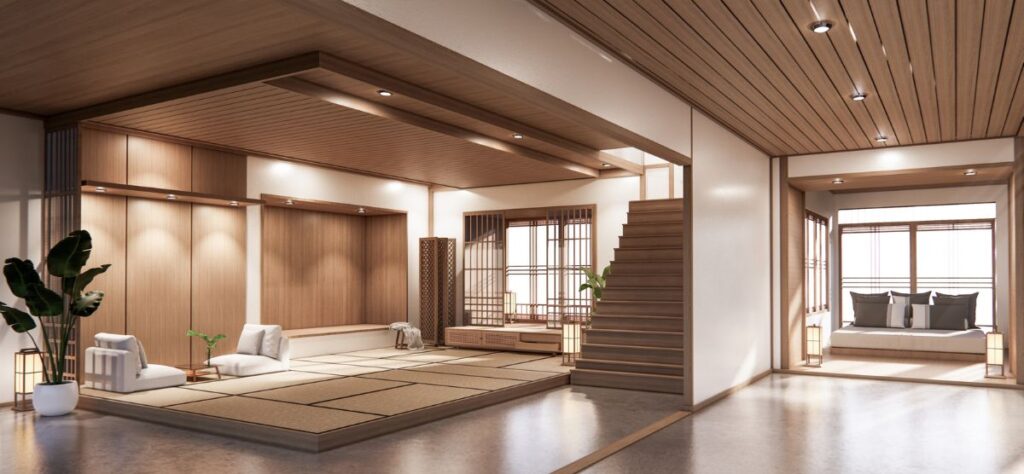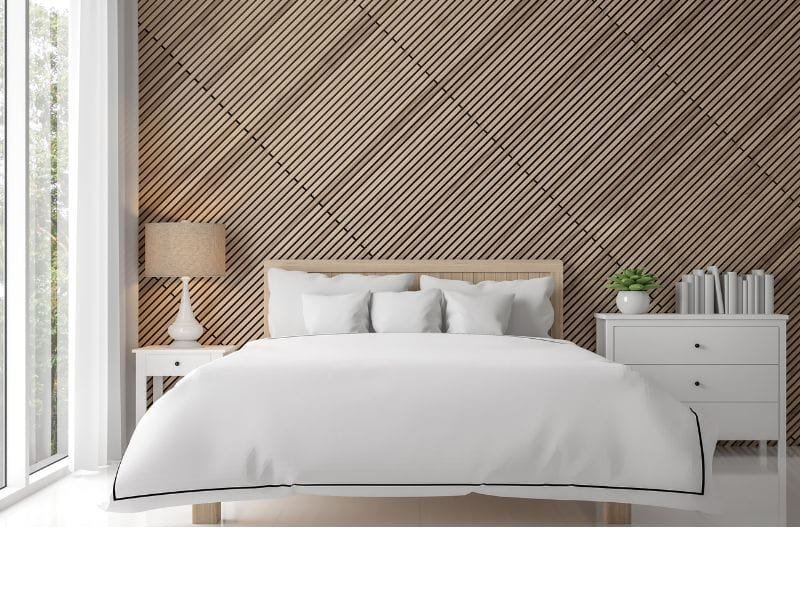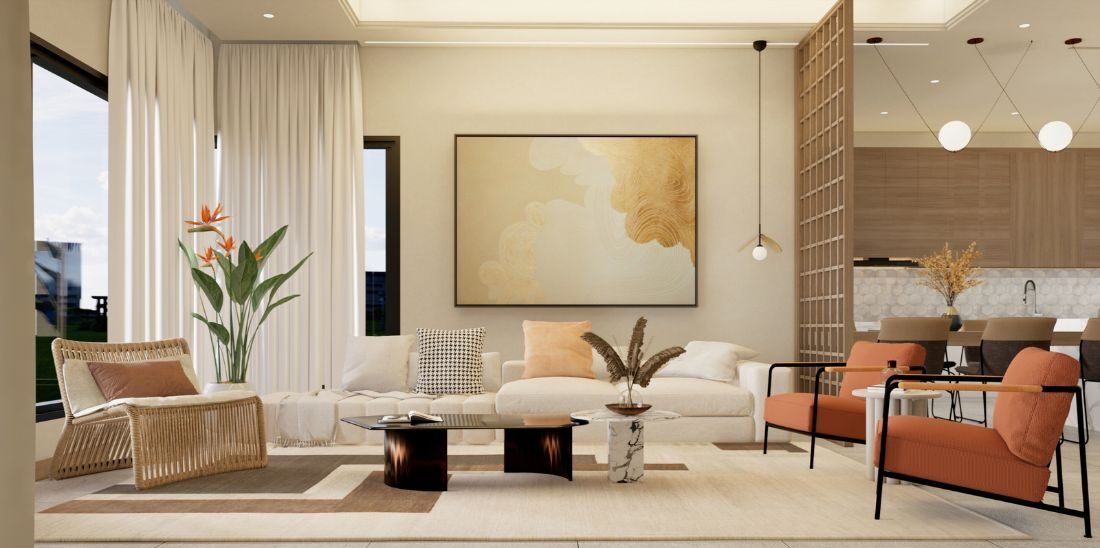What is Poor Lighting
Poor lighting can include dimly lit spaces, harsh overhead fixtures, excessive glare, or an overuse of artificial blue light. These issues are common in both home and office environments and can negatively impact how we feel and function.
Inadequate lighting can lead to various health issues, so understanding how to choose lighting is essential for making your space more comfortable.
In this article, you’ll find common problems associated with poor lighting and how to avoid them, as well as tips for creating healthy lighting in your space.
What Are the Effects of Poor Lighting on Your Health?
Eye Strain: Insufficient or harsh lighting strains the eyes, causing discomfort and fatigue, leading to headaches or difficulty focusing. Dim or harsh lighting can also create feelings of gloominess or sluggishness.
Sleep Disruption: Exposure to bright artificial light, especially in the evening, can disrupt sleep patterns, making it difficult to fall asleep.
Major Impact on Aesthetics: Poor lighting can make a space look uninviting and unattractive. For example, harsh overhead lights can wash out a room’s features, while inadequate lighting can create dark, unwelcoming areas. On the other hand, well-planned lighting enhances the beauty of a space, making it more inviting and comfortable.
Distraction and Fatigue: Poor lighting conditions cause distraction, discomfort, and fatigue, negatively affecting performance and productivity.
Mood Effects: Overall, inadequate lighting negatively impacts the mood of individuals in all settings, whether at home, in the workplace, or in healthcare and educational institutions.
Common Lighting Mistakes to Avoid in Interior Spaces
- Avoid Harsh Direct Lighting: Avoid using overly bright or direct lights that cause discomfort. Usually, this is caused by overly bright or harsh lights that are somewhat near eye level. Intense lighting whether natural or artificial indoors can strain the eyes.
- Avoid Glare: Glare caused by excessive brightness or reflections can cause irritation, eye strain, and fatigue.
To reduce glare:
- Use shades, blinds, or curtains to control natural light.
- Use diffusers in light fixtures to soften the light.
- Choose anti-glare screens for computers and TVs.
- Position your workspace or seating to minimize window and light reflections.
- Avoid Blue Light Dominance: Blue light is emitted by devices such as computers, smartphones, tablets, TVs, fluorescent bulbs and LEDs (except those with a 2700K or 3000K color temperature). Especially in the evening, it disrupts sleep and circadian rhythms by suppressing melatonin production, a hormone that regulates sleep.
Here are some gadgets and techniques to consider to protect your eyes from screens and minimize blue light exposure at night:
- Blue Light Blocking Glasses: These glasses have a special coating that filters out some blue light. While some studies suggest potential benefits, research is ongoing.
- Night Shift/Night Light Modes: Most modern devices have built-in settings like “Night Shift” or “Night Light” that reduce blue light emission in the evening hours. Utilize these features before bed.
- Screen Dimmer: Adjust the screen brightness to a comfortable level. Very high brightness can contribute to eye strain.
- Take Breaks: Look away from your screen and focus on something else at a distance every 20 minutes or so. This helps reduce eye strain.
- Avoid Screen Time Before Bed: Minimize screen use, especially devices emitting blue light, for at least an hour before bedtime. Opt for relaxing activities like reading a book.
- Reduce Flicker: Unstable or flickering lights can cause distraction, eye strain, and headaches. Fluorescent lights and some dimming methods can cause flicker. Select LED lights with flicker-free dimming features.
- Avoid Insufficient Lighting: Poorly lit spaces can lead to eye strain, headaches, and a generally gloomy atmosphere that makes one feel less energized and productive, especially in areas designed for activity. For example, a dimly lit home office might make it difficult to focus on tasks, while a poorly illuminated kitchen can create safety hazards. Poor lighting in vanity areas can make it difficult to apply makeup, shave, or perform other personal care tasks, leading to accidents.
- Overlooking Light Pollution: Limit outdoor lighting that contributes to light pollution and negatively impacts wildlife and the environment.
How to Choose Lighting for Health & Comfort in Interiors
- Keep Light’s Color Temperature in Mind:The color temperature of light, measured in Kelvin (K), directly influences our behavior.
- For Productivity: Cool-tone lights with higher Kelvins, around 4,000K and above, resemble daylight. These lights are ideal for task-oriented spaces like workspaces, study areas, kitchens, and offices, where focus and alertness are essential.
- For Relaxation or Coziness: Warm-tone lights, ranging from 2,700K to 3,000K, create a cozy atmosphere, making them suitable for relaxing and winding down. Use these lights in living rooms, bedrooms, lounges, and dining areas to create a warm and inviting ambiance.
- You can also consider combining warm and cool lights to create a balanced atmosphere suitable for different spaces.
NOTE: Color Temperature influences our body’s internal clock, or circadian rhythm. Exposure to cool, blue-toned light during daylight hours helps maintain alertness and regulate sleep patterns.
Meanwhile, warm, yellow-toned light in the evening helps with relaxation and prepares the body for sleep by increasing melatonin production. Natural light patterns can be aligned with lighting to optimize sleep quality, energy levels, and overall health.
2. Control light intensity with dimmers
The right light intensity makes a space versatile and adaptable. It’s easy to adjust light levels to suit various activities and moods with dimming capabilities. Comfort, productivity, and overall atmosphere are enhanced by this flexibility.
3. Make the Most of Natural Light:
Take advantage of natural light whenever possible! Maximize daylight indoors to boost mood and vitality and save energy by not relying on artificial lights. Avoid blocking natural light sources and position workspaces near windows.
This can make a big difference and reduce the need for artificial lighting.
4. Take Advantage of Full-spectrum lights
Full-spectrum bulbs mimic natural sunlight by providing a range of light wavelengths, from warm to cool. By simulating natural daylight, this type of lighting enhances color accuracy, reduces eye strain, and improves mood and productivity.
It is particularly effective in treating Seasonal Affective Disorder (SAD) as well. Since it compensates for the lack of natural sunlight during darker months, it reduces depression symptoms and enhances mental health.
5. For practical reasons, use Energy Efficient bulbs
Energy-efficient lighting, such as LED or CFL bulbs, consumes less power while providing the same or better illumination than traditional incandescent bulbs.
These options reduce energy consumption, lower utility bills, and have a longer lifespan, making them a cost-effective and eco-friendly choice. When it comes to lighting, this is one of the smartest hacks.
6. Don’t Forget to Layer Lighting
Most importantly, combine ambient, task, and accent lighting. This is a very effective method for creating a balanced and comfortable atmosphere. It improves functionality for specific activities, while adding depth and visual interest to a room.
Labels or Certificates to Look For When Selecting Lighting
When choosing lighting products, look for labels or certificates that indicate their energy efficiency and sustainability.
- ENERGY STAR-certified lighting: Look for bulbs or fixtures with the energy star label which means lighting meets strict energy efficiency criteria and can provide significant energy savings.
- LED bulbs are a popular energy-efficient option as they use less energy and have a longer lifespan compared to conventional incandescent bulbs. Choosing energy-efficient lighting not only saves money on electricity bills but also contributes to reducing greenhouse gas emissions and creating a more sustainable future.
- Color Rendering Index (CRI): A higher CRI indicates that a light source accurately reveals the true colors of objects, which is crucial in spaces like kitchens and work areas.
- LEED (Leadership in Energy and Environmental Design): which promote sustainable building practices.
POINT OF ALIGNMENT
A healthy indoor light environment is about creating a balanced and adaptable space. By incorporating natural light, controlling color temperature and brightness, and minimizing blue light exposure at night, you can promote better eye health and a healthier sleep cycle and overall well being.
Explore how to enhance your space with our expert tips on furniture and lighting here!





